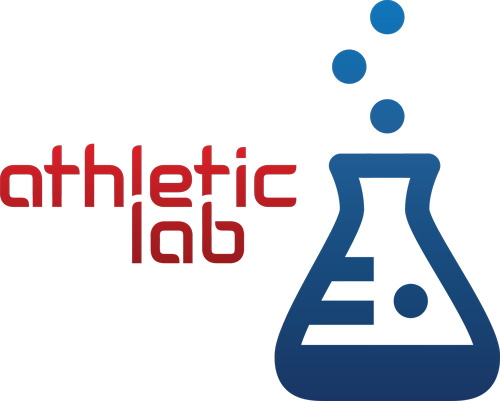Blood Flow Restriction Therapy
By Brian Schiff, PT, OCS, CSCS
Blood flow restriction (BFR) therapy is one of the newer techniques being used in the sports medicine field. Our staff has been utilizing personalized blood flow restriction (PBFR) therapy since November 2017 using the Delfi personalized tourniquet system (PTS). It has been credited with helping wounded warriors recover from volumetric muscle loss as well as professional athletes in all the major sports.
What exactly is BFR?
It is the application of a specialized tourniquet system to the proximal arm or leg, which is inflated to a personalized and specific pressure to reduce blood flow to an exercising extremity. For the lower extremity, the occlusion pressure is 80%, whereas the upper extremity pressure is usually set at 50%.
The application is brief and intermittent, usually lasting about 6 minutes per exercise. For most clients, a total of 3-4 exercises are used leading to 24-30 minutes based on the specific exercises prescribed. Typically, to increase strength and hypertrophy a person would need to lift a significant amount of weight (greater than or equal to 60% of a 1 repetition maximum). With PBFR you can create significant strength and hypertrophy gains with loads as low as 20% 1RM.
What is the science behind this training tool?
The landmark study by Takarada published in 2000 revealed that significant hypertrophy gains are seen with occlusion and the use of lighter training loads. There is an increase in muscle protein synthesis as well as growth hormone secretion.
In addition to muscle hypertrophy, there also appears to be an application for preventing disuse atrophy simply using prescribed occlusion protocols. This may prove very beneficial for clients who are non-weightbearing for extended periods of time after an injury or surgery and not able to perform much resistance training. This type of treatment is also proving helpful in cases of chronic pain, tendonitis, arthritic pain and general muscle reconditioning.
Who are good candidates for this type of therapy?
It should noted that there are several type of BFR training aids on the market. Since we work in the clinical setting day to day, we wanted to use a system that accurately and consistently measures the amount of occlusion in our clients. Therefore, we partnered with Owens Recovery Science and use the Delfi PTS tourniquets (the only FDA approved blood flow occlusion measuring device on the market).
With respect to physical therapy, below are some conditions and examples of how BFR may prove helpful in the rehab process:
- Improving quadriceps strength after ACL reconstruction
- Decreasing patellofemoral pain when the client cannot perform traditional exercises
- Knee osteoarthritis
- Patella tendinitis
- Chronic pain
- Improved muscle activation following knee, hip and shoulder surgery
- Rotator cuff strengthening
Overall, I feel BFR is a safe and effective adjunct to physical therapy. It has proven to be an excellent tool for accelerating strength recovery after surgery, reducing disuse atrophy and providing people who could not previously load their joints with traditional strength training an opportunity to increase strength using lower loads while sparing their joints from potentially dangerous heavier and compressive loads.
Are there contraindications?
Ultimately your physician or healthcare provider can determine if you are a good candidate or not, but the following list includes some general contraindications:
- History of deep vein thrombosis
- Open fractures of the leg
- Post‑traumatic lengthy hand reconstruction
- Severe crushing injuries
- Severe hypertension
- Elbow surgery (where there is concomitant excess swelling)
- Skin grafts in which all bleeding points must be readily distinguished
- Compromised vascular circulation, e.g., peripheral artery disease
- Sickle cell disease or trait
BFR is currently being used by professional athletes, the military, NCAA, PT/OT programs, large healthcare systems and private clinics. While it may not be appropriate for everyone, it seems to offer some promising benefits for both the rehab and performance training worlds.
Article references:
https://www.ncbi.nlm.nih.gov/pubmed/10846023
https://www.ncbi.nlm.nih.gov/pubmed/10642363
https://www.ncbi.nlm.nih.gov/pubmed/11128848
About Brian Schiff:
Brian Schiff graduated from Ohio State University in 1996 with a Bachelor’s of Science degree in Allied Health Professions, Physical Therapy. He became a Certified Strength & Conditioning Specialist (CSCS) through the National Strength & Conditioning Association in 1998. From 2002-2006, Brian served as the Strength & Conditioning coach for the Columbus Crew Major League Soccer Team. Brian is an APTA board-certified Orthopaedic Clinical Specialist (OCS) and also certified in Functional Movement Taping (FMT) and the Functional Movement Screen (FMS). In 2014, he became credentialed to perform Dry Needling.
Brian has worked as the supervisor and Sports Physical Therapist for Raleigh Orthopaedic Performance Center since 2010. He specializes in treating orthopaedic and sports medicine cases and has a special interest in rehabbing baseball injuries and ACL prevention/rehab. Brian has worked with athletes in NFL, NBA, MLB, NHL, MLS, USTA, US Rugby as well as numerous Division 1 Collegiate athletes. He currently serves as a PT consultant for the Carolina Hurricanes. Brian is also a faculty member for Allied Health Education and presents continuing education webinars and live seminars for PT’s, ATC’s and fitness professionals.









